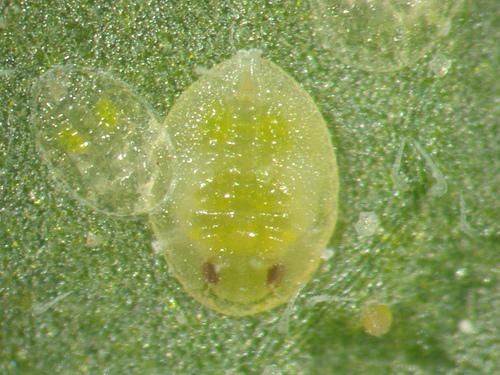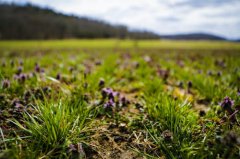How to treat whitefly? What is the control method of whitefly and what medicine is used for whitefly?
We should understand the characteristics of pests and various control methods, apply correct control techniques, observe the safe harvest period, change farming management methods, and select agents with low toxicity to natural enemies in order to protect or release natural enemies in order to reduce pesticide residues and pollution and ensure the health of producers and consumers.

The insect population of silver leaf whitefly often soars as soon as it occurs, and plants that are seriously damaged and suffer from virus disease are often left in the field to accelerate the spread of disease and insects, especially those of Solanaceae, Leguminosae or Cucurbitaceae that are susceptible to virus disease. special attention must be paid to the occurrence and control of this pest, which can be controlled at the seedling stage. At present, farmers can use facility cultivation, garden cleaning or sticky board trapping.
Prevention and cure method
I. Wimbledon facilities
The density of Bemisia Tabaci varies with different cultivation methods. The well-equipped warm net room can prevent the invasion of this insect, and the lack of proper control after invasion may lead to better equipment and higher density. According to the results of the investigation, the closer to the door, the higher the density, the highest density is 0.3 meters away from the entrance and exit, and the density decreases gradually after 5 meters, but the whitefly population has a foothold in the net room, so it is not easy to destroy. Therefore, it is very important that the first and second doors should be sprayed thoroughly before seedling transplantation. Spraying in the facility should be sprayed from the bottom up. High humidity can reduce the group and slow down its activities.
II. Green manure crops
The host plants of silver leaf whitefly are very wide, and the previous green manure must be carefully selected in high density areas. Rape and soybeans are the better host plants, followed by sun hemp, and Sesbania is the crop that whitefly does not like to inhabit.
Third, immersion treatment
Before planting, plough → soaked for one day, → soil preparation → planting, the early abandoned plants, weeds or turned into the soil to remove host plants, can reduce the source of insects.
IV. Cultivation and fertilization management
Silver-leaf whitefly prefers to feed or lay eggs on the back of the leaves of crops with insufficient sunlight, dense planting or luxuriant and unventilated crops. Eggplant, family and cucurbitaceae crops, nitrogen fertilizer should not be applied too much, coring and pruning should be done thoroughly, and if the branches and leaves are luxuriant at the base of the plant, it often becomes a hotbed for the reproduction of this insect. Adequate sunshine, good ventilation and proper fertilization can effectively control its occurrence. This insect is the vector of virus disease. if infected plants are found in the garden, the plants with staggered roots should be cut off at the base of the ground, exposed in plastic bags or removed from the site. People and appliances will be transmitted mechanically, and the utensils should be disinfected with alcohol.
Fifth, remove the old leaves
Silver leaf whitefly likes to lay eggs in places where there is not enough sunshine and wind. For example, the old leaves of muskmelons and tomatoes near the border should be removed and placed in plastic bags and exposed to the sun to kill the insects on the leaves, or move out of the garden to interrupt the reproduction of the population.
VI. Field hygiene
Adults and nymphs are versatile, so weeds, residual plants after harvest, abandoned vegetables or melon orchards or other sporadic crops should also be controlled or eliminated at the same time, so as not to become a hotbed for pest breeding and a dead corner for pest control. Ploughing as soon as possible after harvest to protect the growth of the next crop.
VII. Utilization of sticky paper or water tray
Adults prefer yellowish green and can be lured by green or yellow sticky paper or water plates. The adhesive paper can be rolled into a tube shape, suspended or upright at about 0.50 cm above the crop growth point, not more than 50 cm. The more efficient the adhesive paper is, the worse the distance between the adhesive paper is about 5 m. The adhesive paper sold in the market is waterproof and not dustproof, and must be updated after 2 weeks or covered with worms or without stickiness. The water trapped by the water plate should be kept clear and transparent, and a small amount of soapy water should be added or cleaned in the water to prevent the induced worm from flying away again, and the clear water should be changed immediately when it is dirty. This method can not only restrain the population density of insect pests, but also be used to detect the occurrence density or epidemic situation of insect pests in the field, and the data obtained can be used as a basis for control. The trapping effect of net room is more significant than that in the open air.
8. Bagging
All the pests of Homoptera secrete honeydew to cause black coal disease, and the secretion of silver leaf whitefly is thicker and thicker, which causes a layer of black glue on the plant, which hinders the photosynthesis and respiration of crops, pollutes the fruit and lowers the commodity price. For example, for melon crops of Cucurbitaceae, bagging is the best policy to prevent diseases and insect pests, pollution and agricultural residues. Only before bagging, you should spray the egg-killing agent thoroughly and thoroughly before bagging, and apply it immediately after the drug spot is dry.
IX. Release or protect natural enemies
Parasitic wasps of the family Aphididae are more often parasitized on nymphs in the field, and most of the insecticides used to control whitefly are widely effective and highly toxic to natural enemies. Insect growth regulators such as Bufenjing, Livoron and Bailiprifen are less toxic to natural enemies. Organic cultivation in facilities can release predatory or parasitic natural enemies without spraying pesticides. Among the predatory natural enemies, ladybugs, lacewings, stink bugs and spiders can all prey on nymphs and adults. Parasitic natural enemies such as Oriental aphid wasp, shallow yellow aphid wasp and colourful wasp.
10. Chemical control
This paper introduces several chemical prevention and control methods, the following excerpts from biological control methods, can be used in organic agriculture prevention and control methods:
1. Although adults have two pairs of wings, they can fly, but they are not good at flying distances. Small worms mainly rely on the wind to help them migrate. Because of the wide range of host plants, joint control should be implemented in neighboring fields to prevent mutual transmission, which can get twice the result with half the effort.
two。 Actinomycete fermentation-it has the widest insecticidal range, such as Homoptera whitefly, leafhopper, Diptera leafminer, Coleoptera yellow leaf flea and arachnid leaves. The diamondback moth (Plutella xylostella), which was popularized in the early stage to control Lepidoptera, has recently developed drug resistance. Leafy vegetables, fruit vegetables, root vegetables and melons have many kinds of pests and have a long growth period, so they can be regarded as economical and affordable medicine. only the products administer the market for the safety of farmers themselves and consumers, and do not use fake products for the sake of petty gain. If you break your health and be punished by pesticide law, the loss outweighs the gain.
3. Neem seed extract-azadirachtin (neem oil). (Indian species; Taiwan varieties have no such effect), it is non-toxic to human body, and can be used to control pests such as whitefly, Plutella xylostella and aphids on organically cultivated vegetables, but with slow effect and high price.
- Prev

What are the whitefly pests? What are the harmful symptoms of whitefly?
What are the common whiteflies? Whitefly will bring some harm to agricultural products, let's take a look at it together and understand it first. Silver leaf whitefly belongs to Aleyrodidae of Homoptera family Homoptera. It has invaded the island of Taiwan since 1978, endangering the species.
- Next

Integrated pest control: crop pest control in crop pest control
Have you ever heard of using natural pesticides to control diseases? Want to know? Let's take a look. Natural pesticides that can control diseases can be divided into plant composition, mineral composition, plant plus mineral composition and other four types according to their composition sources. first
Related
- A one-day flower show brings 130 million yuan in orders! Nanhai, this Phalaenopsis exhibition is amazing
- What do the flower language and meaning of Lutheran tree mean? Precautions for planting Lutheran tree
- Encounter Chaoshan Kongfu tea, not without this cup of Phoenix single clump
- The durian market in Vietnam and Thailand is flooded. The price of imported durian has plummeted by 30-40% in a month.
- Shanghai solved the problem of local vegetable supply by planting 80,000 mu of green leafy vegetables.
- Wageningen University has become the best agricultural university in the world for the seventh time in a row.
- The strongest export season of South African grapes is full of challenges, with exports to Russia falling sharply by 21%.
- Sri Lanka is on the verge of bankruptcy, "Tea for debt" Organic Agriculture Revolution aggravates the Food crisis?
- Turning waste into earthworm manure and worm manure into organic fertilizer-A new choice for auxiliary farming
- Organic rice growers shoulder the responsibility of nurturing agricultural talents! Yinchuan Sustainable Farm with Organic Life Camp

